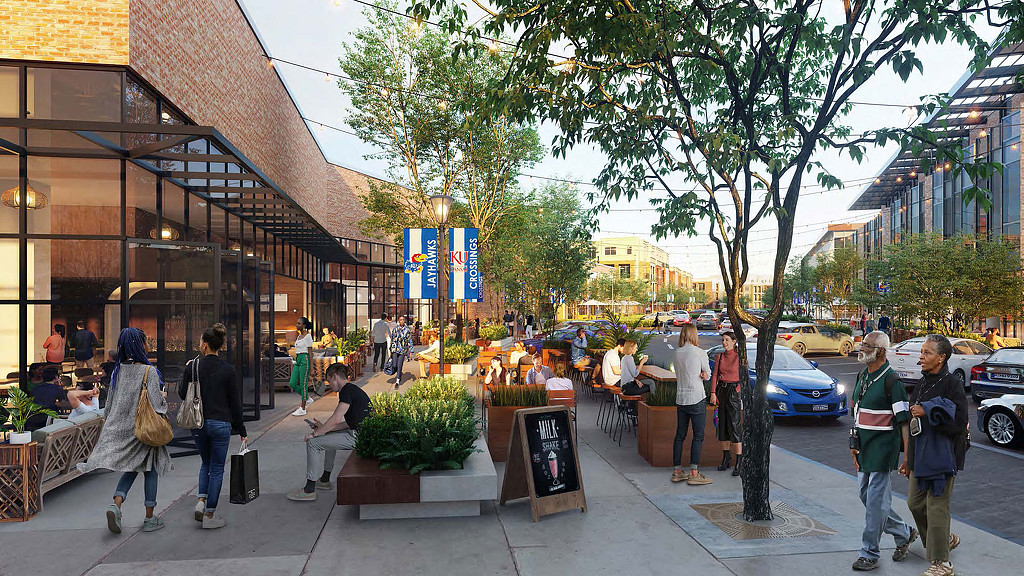The Key Elements of Successful Innovation Districts
February 07, 2022 | Q&A with Alice Davis and Imran Aukhil
We spoke with a few experts on innovation districts: Alice Davis, a Strategy leader for Gensler’s North Central region, who focuses on strategy for innovation districts, and Imran Aukhil, a principal from HR&A Advisors, who focuses on innovation districts in his practice and was responsible for the Real Estate Division of Centennial Campus at North Carolina State University.
What are the core fundamentals of innovation districts?
Davis: The key elements of innovation districts still apply over a decade after Bruce Katz defined them in his work for the Brookings Institution. His seminal article, “The Rise of Innovation Districts,” written with Julie Wagner, talks about the key elements of what these districts want and need. These include:
- Partnerships: A grouping of committed people to the project.
- People: Firms want to be near their competitors and are there with connections to universities and collaborative spaces that promote creativity.
- Places: The design of space needs to promote walking, biking, and human interaction, and has to be cool.
There are three models that he identifies as viable options to pursue when building an innovation district (anchor plus, reimagined urban area, and transformed science park) but he emphasizes the importance of a triumvirate of assets (economic, physical, networking) that are essential to making innovation happen.
Innovation districts are important because, up until now, they have not been largely supported by government intervention, but are a market response to a region wanting to become more competitive.
What are the most notable examples of successful innovation districts and what makes them successful?
Davis: Probably the most profound examples include those that are anchored with a major university, including CORTEX in St Louis, Mo. and Kendall Square in Cambridge, Mass., but there are many others.
Aukhil: A lot of people use the term innovation district in their project brief at the beginning of our work, but it turns out often to be a misnomer. To me, innovation districts boil down to how much commercialization of ideas is happening. What is the pipeline of innovations that can be brought to market?
The challenge with the concept of innovation districts is that it has become more of a design term, and it has gotten away from being measured in terms of economic growth. The definition I go by is “a district developed to help entire regions complete.” The ones that focus on metrics like job creation, firm creation, and investment returns are true innovation districts.
Success in these types of districts often has little to do with the physical environment. In fact, we like to say, of the “three p’s” that Alice mentioned, the place part is the least important. What matters more are the people and the partnerships.
By that, I mean the community must buy into the idea. For example, Huntsville, Ala., is a small town anchored by NASA. It is an amazingly innovative community because it is so well governed and has community support. Charlotte, N.C., is not what you would call a traditional innovation district, but it somehow works because the city is such a banking center and new ideas around finance can easily start because the workforce has that core skill set already. People in design professions tend to focus on the built infrastructure because it looks cool, but without the community behind the idea an innovation district will go nowhere.
People and partnerships are essential to the success of an innovation district. How do you bring them along in your process?
Aukhil: Innovation districts work because, when done right, they diversify the regional and local economy. Often, I encourage leaders of innovation districts to focus on creating an investment fund; invest in our commercial partners first. Focus on promoting local businesses and equitable hiring practices. Differentiate between placemaking and community building… the latter is much more important. Innovation districts must be diverse and equitable to work effectively. You must bring the community along and have them see the benefit early on. Invest in programming and operations and create an innovation economic system first.
I am working on an innovation district where a big benefactor used their money to buy lots of buildings in the area, and I advised them that it is not as important as creating an investment and venture fund.
What new trends are you focused on with respect to innovation districts?
Aukhil: Every university needs to think about its innovation/commercialization strategy. The biggest challenge is that big institutions often cannot get out of their own way. I am working in places that are more polarized and they have never been able to get off the ground because of “zero sum” attitudes between academic departments.
You need a big regional narrative that focuses people’s energies in collaborative ways. For example, in the industrial Midwest, the problems with the global supply chain have created a need for local manufacturing again. Private industries are leading the charge in a whole host of thriving innovation districts focused on solving that issue in the region.
Davis: Community engagement is also essential to success. Innovations must be about creating more opportunities for the greatest number of people. A lot of it comes down to who you are trying to attract. For example, labs, and biotech with tech, often seem more palatable that just tech on its own because of the diversity of end users it brings. A research component is important to promoting diversity.
For media inquiries, email .
